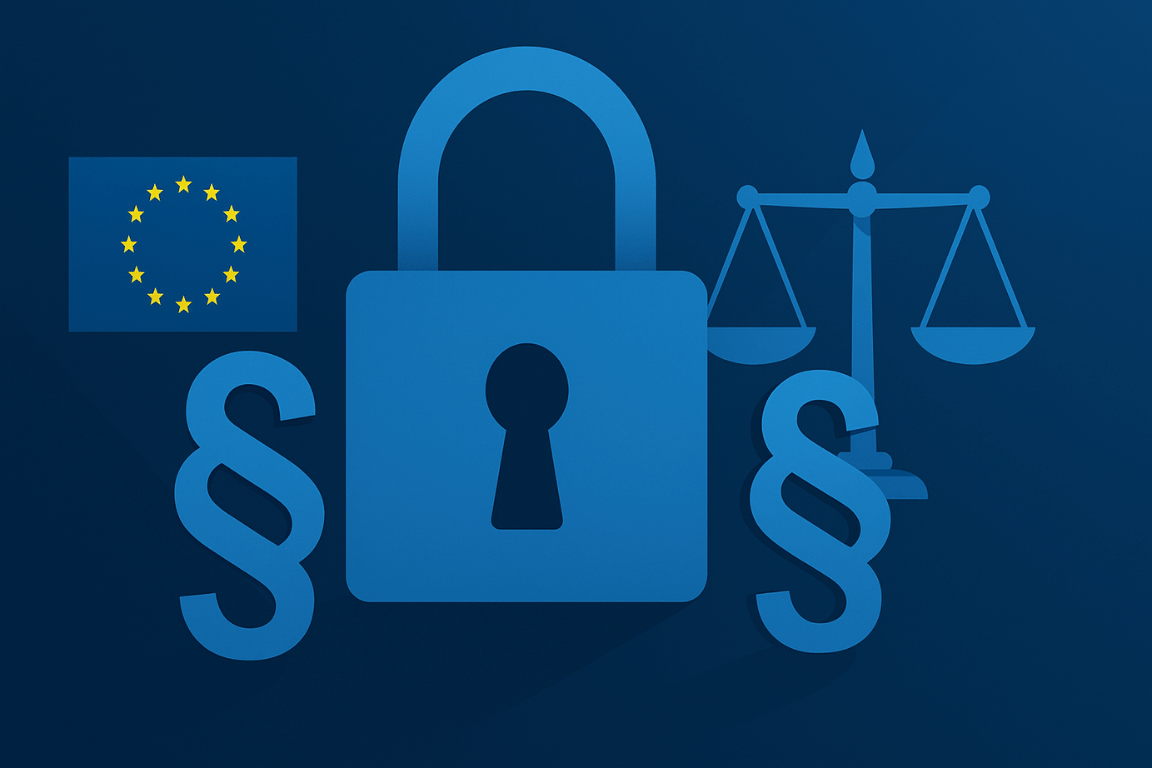Am I Liable If My Employee Falls for a Phishing Attack?
Understanding legal exposure, compliance risks, and smart prevention strategies for SMEs

For small and mid-sized businesses (SMEs), a single phishing email can trigger a cascade of serious consequences: stolen credentials, data loss, reputational damage—and legal action. But is your company legally responsible if an employee falls for a phishing scam?
The answer depends on where you operate and what kind of data is at stake. Across the European Union (EU), the United Kingdom (UK), and the United States (US), laws and expectations vary—but one theme is consistent: preventative measures matter.
In this article, we’ll explore:
- What the law says in different jurisdictions
- When companies are held accountable for employee mistakes
- How training and phishing simulations reduce risk
⚖️ This is not legal advice. Always consult a qualified lawyer in your jurisdiction for specific guidance.
EU: GDPR and NIS2—Training as a Legal Obligation
In the European Union, data protection is governed primarily by the General Data Protection Regulation (GDPR) and, more recently, by the NIS2 Directive.
GDPR: The 72-Hour Rule and Beyond
Under Article 33 of the GDPR, organizations must notify their national Data Protection Authority of a personal data breach within 72 hours of becoming aware of it, unless the breach is unlikely to result in a risk to individuals.
If an employee falls for a phishing email that exposes personal data (e.g., customer emails, HR records, financial details), the organization must:
- Notify the regulator
- Potentially notify affected individuals (if the risk is “high”)
- Document the incident and mitigation steps taken
What matters is not whether the phishing attack was sophisticated—it’s whether the company had adequate safeguards in place.
NIS2: Security for Essential and Important Entities
The NIS2 Directive, in force since 2023, raises the bar further for businesses in sectors like logistics, transport, finance, health, and digital services. It mandates:
- Cybersecurity risk management
- Regular employee training
- Incident reporting obligations
- Fines for non-compliance
The takeaway? Even if your employee made a mistake, your liability may hinge on how well you prepared them.
Source: ENISA Threat Landscape 2024
UK: GDPR Clone and Real-World Penalties
Post-Brexit, the UK retained the GDPR framework in the form of the UK GDPR and the Data Protection Act 2018. Most of the obligations are identical to those in the EU:
- Report data breaches within 72 hours
- Inform affected individuals if there’s a “high risk” to them
- Maintain an internal record of all breaches and decisions
Case Study: Interserve Fine (£4.4M)
In 2022, the ICO fined Interserve £4.4 million after a phishing attack exposed over 100,000 employee records. The ICO cited poor training, outdated software, and insufficient monitoring as key failings—not the employee’s mistake.
In the UK, employers are expected to create a culture of security awareness. That means:
- Regular training
- Incident simulations
- Logging and documenting risks and responses
Source: ICO Enforcement Action
Best practice: NCSC Small Business Guide
US: A Patchwork of Laws with One Message—Act Fast
The United States lacks a single national breach notification law, but all 50 states have their own statutes. These generally require:
- Notification to affected individuals
- Often within 30 to 60 days of discovery
- Some states require notification to regulators
States like California, New York, and Colorado have more stringent requirements, particularly when sensitive data is compromised.
Federal Action via the FTC
The Federal Trade Commission (FTC) can penalize companies for “unfair or deceptive practices”—including poor cybersecurity. In recent years, the FTC has made it clear that employee training and phishing prevention are part of reasonable cybersecurity.
- In 2021, the FTC launched a warning campaign targeting businesses that don’t train employees on social engineering.
- In several enforcement cases, failure to act on known phishing risks was cited as negligence.
Source: FTC Data Breach Response Guide
Are You Liable? It Depends on Preparation
While laws vary, the general legal consensus across jurisdictions is:
- You may not be directly liable for an employee clicking a phishing link
- But you can be held liable if you didn’t take reasonable steps to prevent or mitigate the impact
What counts as reasonable steps?
- Documented security training
- Regular phishing simulations
- Strong access control and monitoring
- Clear response plans
Courts and regulators assess whether the breach was foreseeable and whether you were negligent in preventing it.
A trained, well-informed team is your best legal defense.
How Phishing Simulations Help
Phishing simulations aren’t just an IT tool—they’re a compliance and legal risk management tool.
Benefits include:
- Demonstrating due diligence during audits
- Reducing the chance of real-world breaches
- Educating employees with real-life examples
- Logging metrics and improvements over time
Platforms like AutoPhish make this easy for SMEs:
- AI-generated phishing tests
- Fully GDPR-compliant
- No real data capture
- Ongoing metrics for accountability
“We train our people” is a good story. “We simulate, report, and improve” is a better one.
Final Thoughts: Document Everything
When it comes to phishing-related incidents, your documentation is your insurance policy. If a regulator calls, you need to show:
- When training took place
- How simulations were conducted
- How quickly you responded to the breach
- Whether affected users were notified (and when)
✅ Keep records
✅ Update your policies regularly
✅ Work with legal and IT together
The law may forgive a mistake—but not a lack of preparation.
🧑⚖️ Always consult legal counsel to align your cybersecurity program with local laws and sector-specific requirements.